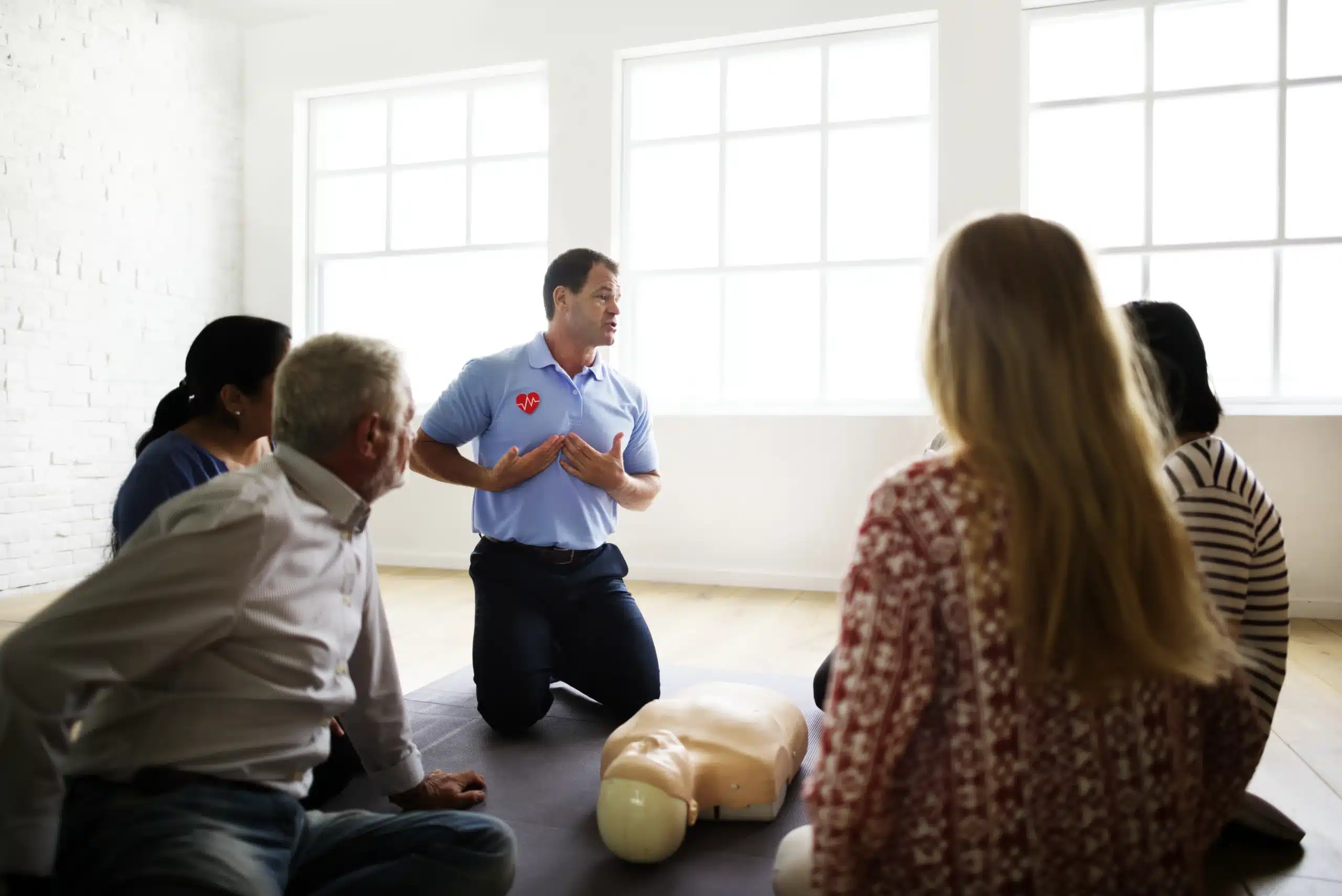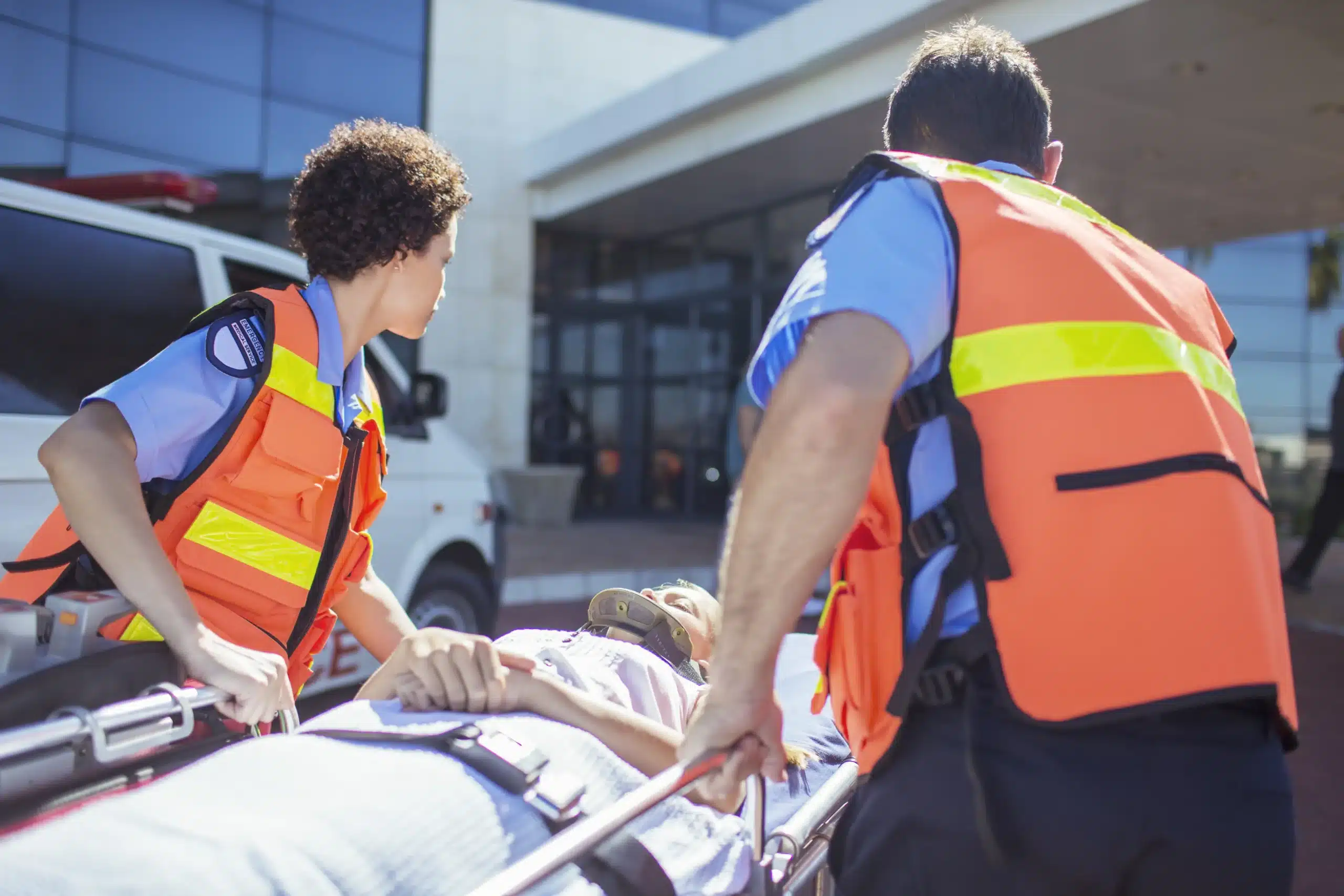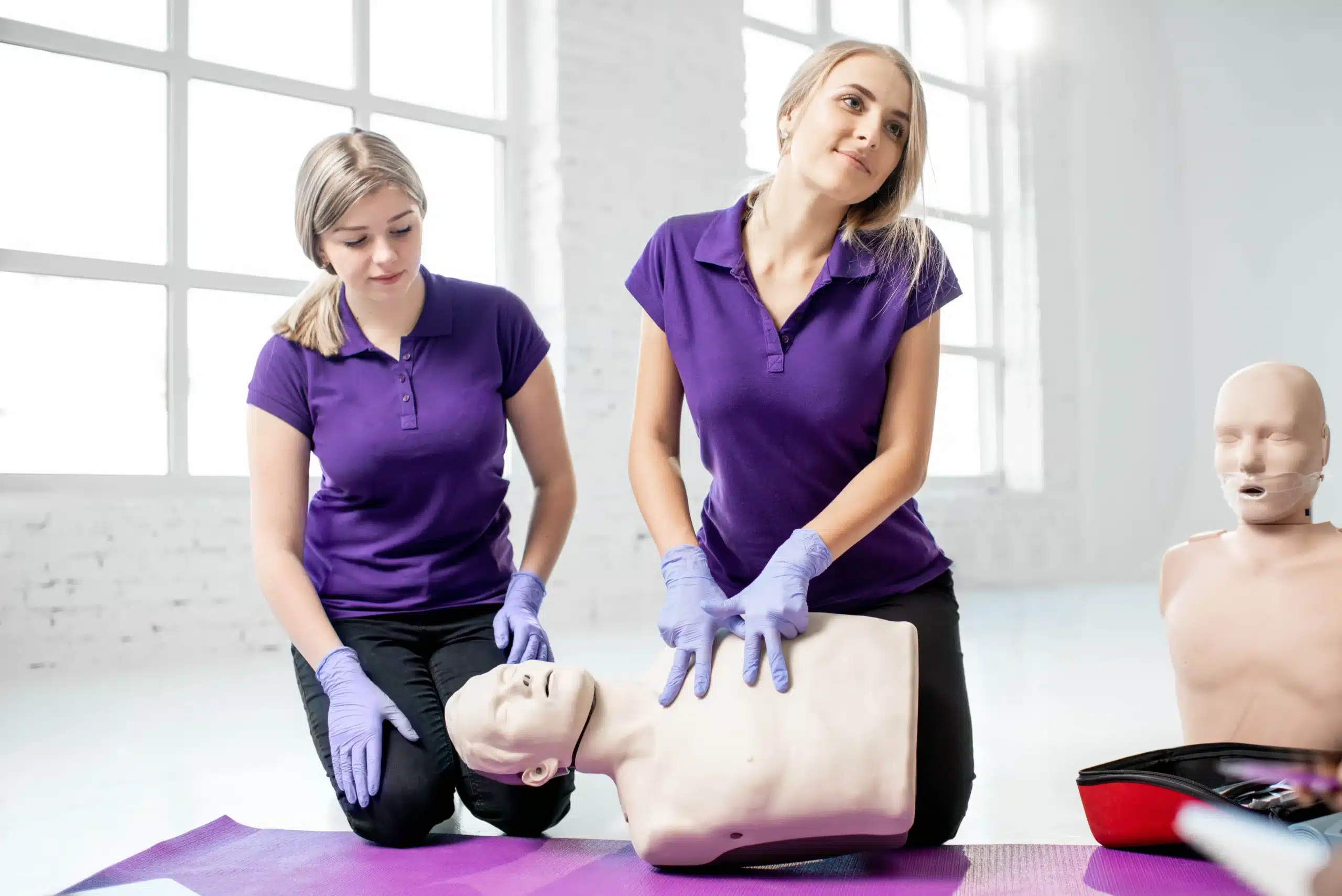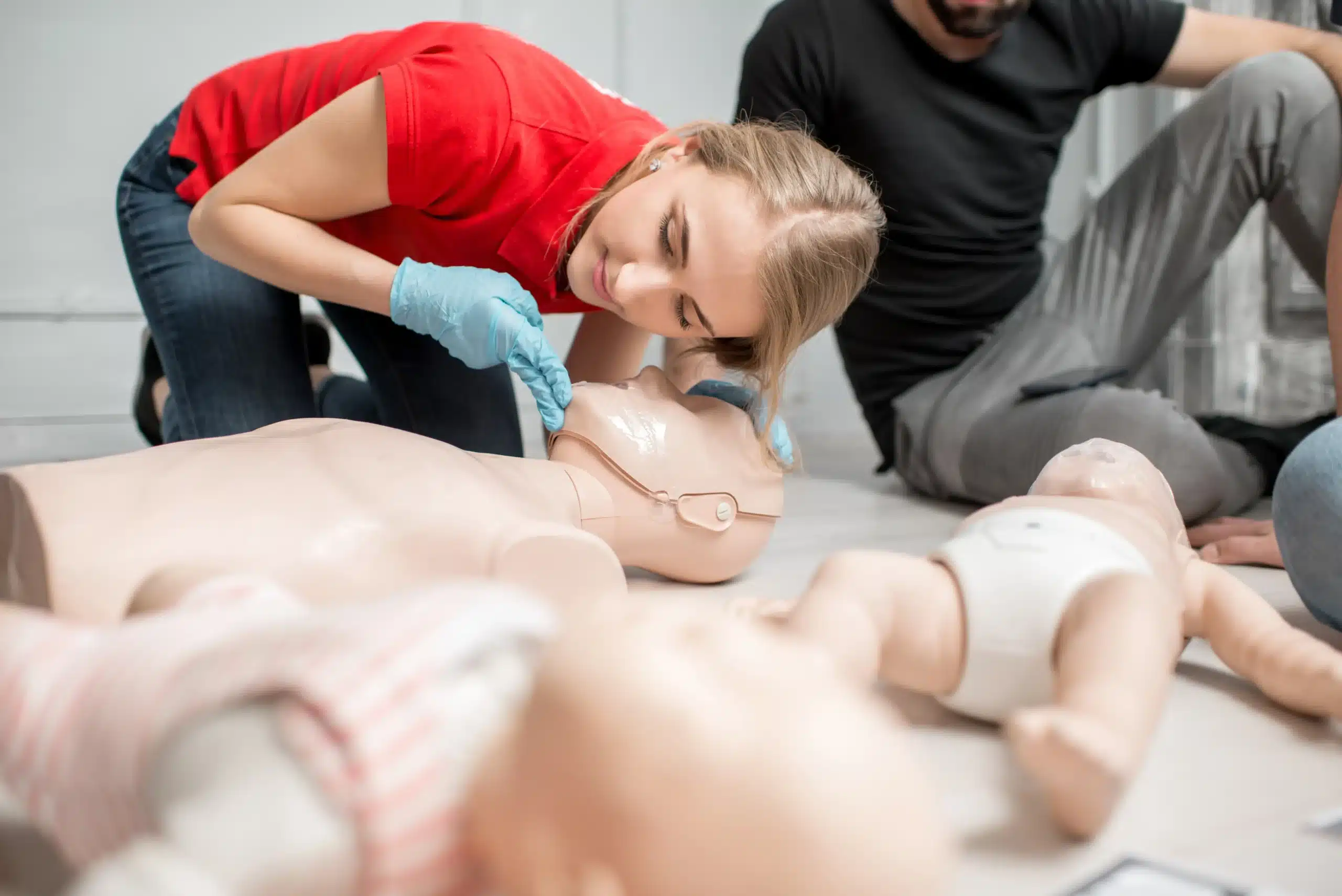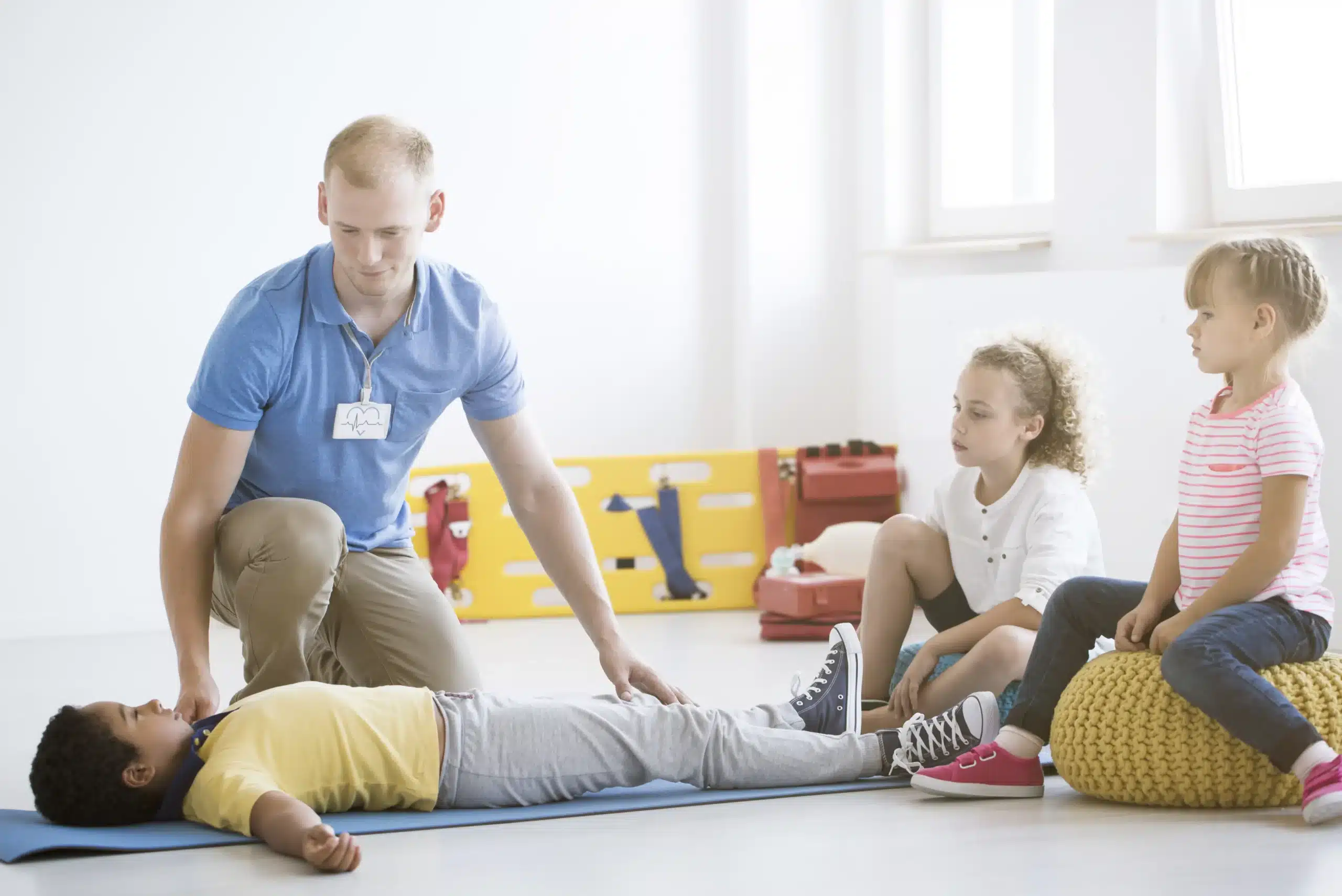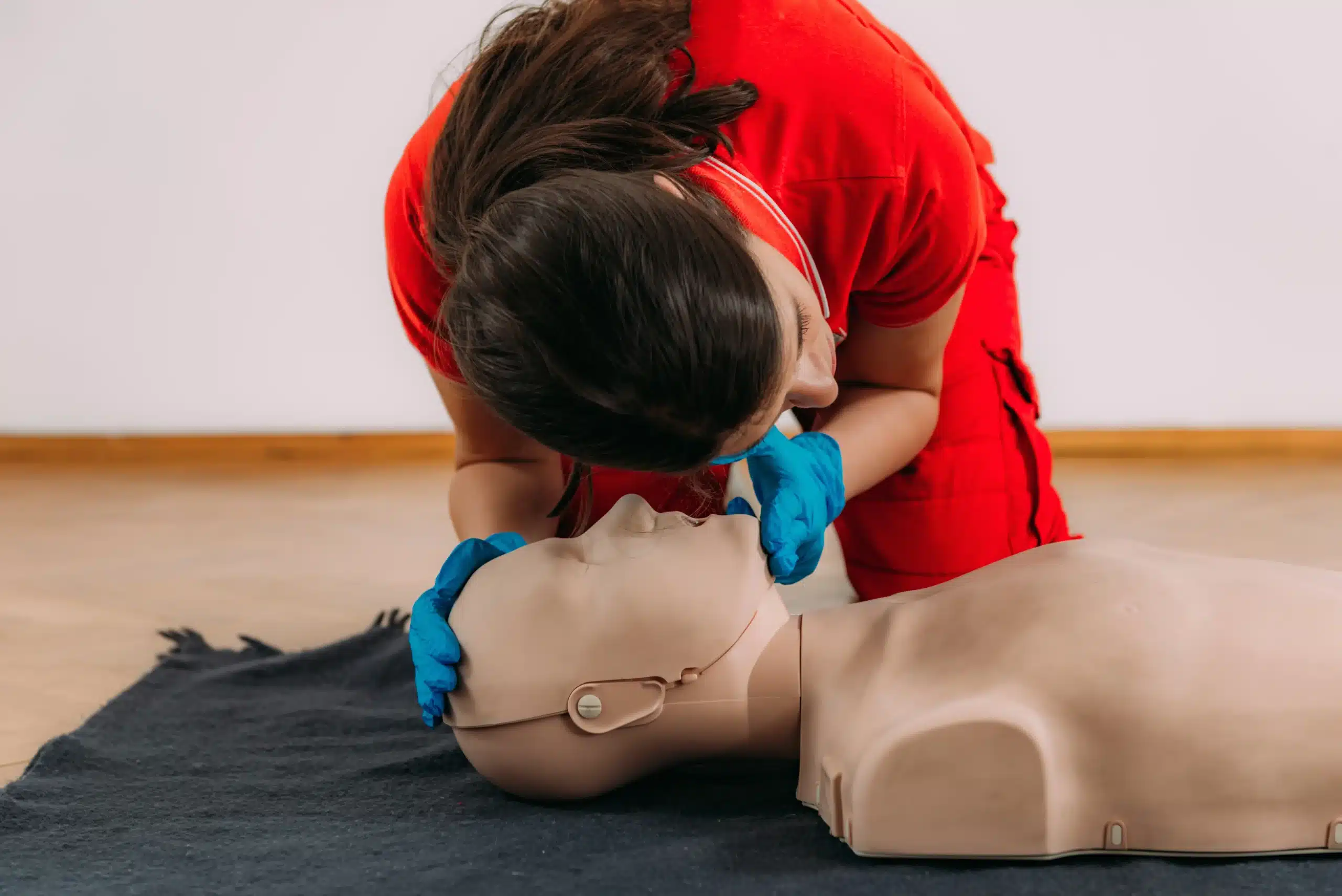Emergencies can happen anytime, anywhere. Being equipped with the skills to respond effectively is invaluable. If you’re in Tracy and seeking CPR training, this guide will provide you with a clear roadmap. We’ll cover the various CPR certification courses available in Tracy, including BLS, ACLS, and PALS, and explain the differences between them. We’ll also discuss the importance of choosing a qualified instructor, break down the costs of CPR training, and explore the different learning formats available. This guide is designed to help you find the perfect CPR training in Tracy that fits your schedule, budget, and learning style.
Key Takeaways
- Choose the right CPR class: Tracy offers various CPR certifications, from basic to advanced levels like BLS, ACLS, and PALS. Select a course that aligns with your role (healthcare provider, childcare professional, etc.) and personal goals.
- Prioritize quality instruction: Seek out instructors with recognized certifications, real-world experience, and a commitment to staying updated on the latest guidelines. This ensures you receive effective, current training.
- Find a course that fits your life: Balance cost, schedule, and learning preferences when selecting a CPR course. Explore in-person, online, and blended learning options to find the format that works best for you. Remember to factor in renewal requirements to maintain your certification.
What is CPR Training in Tracy?
CPR training in Tracy gives people the skills they need to handle medical emergencies. These classes cover various techniques, from the fundamentals of CPR (Cardiopulmonary Resuscitation) to more specialized certifications like BLS (Basic Life Support), ACLS (Advanced Cardiovascular Life Support), and PALS (Pediatric Advanced Life Support). First Aid is also frequently included or offered alongside these courses. Several organizations offer these programs in Tracy, making it easy for residents to find convenient, high-quality training.
Safety Training Seminars, for example, offers daily CPR classes taught by American Heart Association (AHA) certified instructors. This ensures students learn the most up-to-date, evidence-based emergency care practices. The American Red Cross also provides a range of CPR training and certification classes in Tracy, with options for in-person learning, online courses, and blended learning formats. This flexibility makes it easier to fit the training into any busy schedule. For those who prefer to learn at home or with a group, providers like In-Home CPR offer on-site training with certified instructors. The variety of training options ensures CPR education is accessible to everyone in Tracy.
CPR Certification Courses Available
Knowing which CPR certification level is right for you can feel overwhelming. This section clarifies the various CPR courses available in Tracy, including BLS, ACLS, PALS, and First Aid/CPR combination courses. Safety Training Seminars offers all these courses, ensuring you can find the right fit.
Basic Life Support (BLS)
The BLS course provides foundational knowledge and skills to respond to life-threatening emergencies. It covers core techniques like CPR, recognizing the signs of a heart attack or stroke, and using an AED. This course is ideal for healthcare providers and anyone seeking a solid understanding of basic life support. BLS certification is also a prerequisite for more advanced courses like ACLS and PALS.
Advanced Cardiovascular Life Support (ACLS)
ACLS builds upon the skills learned in BLS. This advanced course focuses on treating adult victims experiencing cardiac arrest, stroke, and other cardiovascular emergencies. It emphasizes teamwork, effective communication, and high-performance resuscitation techniques. ACLS certification is essential for medical professionals, including physicians, nurses, paramedics, and respiratory therapists.
Pediatric Advanced Life Support (PALS)
The PALS course equips healthcare providers with the specialized knowledge and skills to manage pediatric emergencies. It covers a range of topics, from respiratory distress and shock to cardiac arrest and post-resuscitation care. PALS certification is crucial for pediatricians, pediatric nurses, emergency medical technicians, and other professionals working with infants and children.
First Aid and CPR Combination Courses
Combining First Aid and CPR training offers comprehensive preparedness for various emergencies. These courses teach how to respond to common injuries like cuts, burns, and fractures, in addition to performing CPR and using an AED. This combination is valuable for anyone, from parents and teachers to workplace safety officers and community members. It provides a well-rounded skill set to handle both minor and life-threatening situations.
CPR Instructor Qualifications and Credentials
When choosing CPR training in Tracy, the instructor’s qualifications are a key factor. Look for a blend of certifications, real-world experience, and commitment to ongoing training. This ensures you receive top-notch instruction and learn the most current life-saving techniques.
American Heart Association Certifications
American Heart Association (AHA) certified instructors complete a rigorous training program, demonstrating knowledge and skills in CPR and other emergency cardiovascular care. Safety Training Seminars offers AHA-certified courses in BLS, ACLS, and PALS, aligning your training with the latest AHA guidelines. This certification is widely recognized and respected.
Real-World Healthcare Experience
Certifications are essential, but real-world experience adds valuable expertise. Instructors with healthcare backgrounds, like those at In-Home CPR, bring practical knowledge to the classroom. Their experience in emergency medical services or other healthcare settings allows them to share real-life scenarios and answer questions effectively.
Ongoing Training and Updates
Emergency cardiovascular care constantly evolves with new research and guidelines. Choose instructors dedicated to staying current. The AHA’s Resuscitation Quality Improvement (RQI) program, offered by providers like Bay Area CPR, is a prime example of a modern approach to maintaining skills. Instructors participating in programs like RQI demonstrate their commitment to providing the most effective, up-to-date training.
Cost of CPR Training in Tracy
CPR training is an investment in life-saving skills, and understanding the costs involved can help you plan accordingly. This section breaks down typical pricing structures for CPR courses in Tracy, explores potential discounts, and offers guidance on comparing providers.
Course Pricing
Several factors influence CPR course pricing in Tracy. The type of course you choose (BLS, ACLS, PALS, or First Aid/CPR combination) is a primary factor. Generally, more advanced courses like ACLS and PALS have higher costs than basic CPR and BLS training. The course format also plays a role; in-person training sometimes differs in price from online or blended learning options. Safety Training Seminars offers a range of courses to meet diverse needs and budgets. Check their website for the most up-to-date pricing information.
Discounts and Promotions
Many CPR training providers offer discounts and promotions, making these valuable courses more accessible. Look for discounts for group registrations, students, or first-time participants. Safety Training Seminars offers a low-price guarantee, ensuring you receive excellent value. It’s always wise to inquire directly with the provider about any current promotions.
Compare Provider Costs
When comparing CPR training providers in Tracy, consider more than just the price. While cost is important, the quality of instruction and the certification you receive are equally crucial. Look for providers offering American Heart Association-certified courses, as these are widely accepted. Consider factors like instructor experience, course materials, and student reviews. Safety Training Seminars offers high-quality, AHA-certified courses, often at competitive prices, serving Tracy, Stockton, and Lodi. By weighing all these factors, you can choose a provider that offers both excellent value and top-notch training.
Choose the Right Training Format
Deciding on the right CPR training format depends on your learning style, schedule, and budget. Let’s explore the pros and cons of in-person, online, and blended learning options to help you make the best choice.
In-Person Training Benefits
In-person CPR training offers hands-on practice and personalized feedback from a certified instructor. This direct interaction is invaluable for mastering essential techniques and building confidence in your abilities. You’ll also have the opportunity to ask questions and learn from the experiences of other participants. For many, the structured environment of a classroom setting promotes better focus and engagement. In-person training typically leads to a two-year certification that meets OSHA requirements.
Online Course Advantages
Online CPR courses offer unparalleled flexibility, allowing you to learn at your own pace and convenience. This format is ideal for those with busy schedules or limited access to in-person classes. Online courses often incorporate videos, interactive exercises, and knowledge checks to reinforce learning. While convenient, it’s important to note that online-only courses don’t always include the hands-on practice needed for some certifications, such as those required by OSHA. They may serve as a valuable refresher or introduction, but they may require a separate in-person skills session for full certification.
Blended Learning Flexibility
Blended learning combines the convenience of online learning with the benefits of in-person instruction. You’ll typically complete the cognitive portion of the course online, covering the theory and principles of CPR. Then, you’ll attend a shorter, in-person session focused on hands-on skills practice and assessment. This approach offers a balanced and efficient way to achieve certification, catering to diverse learning styles and schedules. Blended learning is a great option for those seeking flexibility without sacrificing the essential practical training component. It also often allows you to move more quickly through the certification process.
Top CPR Training Providers in Tracy
Finding the right CPR training provider is crucial for a positive learning experience. Here’s a rundown of some popular options in Tracy:
Safety Training Seminars
Safety Training Seminars offers American Heart Association (AHA)-certified courses in CPR, BLS, ACLS, and PALS. Conveniently located in nearby Stockton, they bring their expertise to the Tracy community. Their focus on AHA certifications ensures high-quality training that meets industry standards. For convenient and affordable options, explore their BLS certification and low price guarantee.
American Red Cross
The American Red Cross is a well-known provider of CPR training and certification. They offer various learning formats, including in-person, online, and blended learning. In-person Red Cross classes provide hands-on training and a two-year certification meeting OSHA requirements.
In-Home CPR
In-Home CPR brings the training to you, offering classes at your home or business in Tracy. Their instructors are qualified medical professionals, including EMTs, RNs, and paramedics. Learn more about the convenience of in-home BLS training.
CPRToday
CPRToday provides nationally validated, ECC-compliant courses. Check their website for current promotions and discounts on course costs.
My CPR Certification Online
If you’re looking for online certification, My CPR Certification Online offers courses accepted in California. Verify their online CPR certification meets California standards before enrolling.
American BLS
American BLS offers various courses, including CPR, BLS, First Aid, and Bloodborne Pathogens. Check their website for promo codes and discounts on courses.
Register for CPR Classes
Getting signed up for CPR training in Tracy is straightforward. We’ll walk you through the process, what you’ll need, and how to find a time that works for you.
Registration Process
Safety Training Seminars makes registration easy. You can browse available courses and sign up for CPR, BLS, ACLS, PALS, and First Aid classes directly on our website. Select your preferred date and time, complete the short registration form, and you’ll receive a confirmation email with all the details.
Required Materials
For most CPR classes, you won’t need to bring much. The most important thing is to come ready to learn and participate. Your instructor will provide any necessary equipment, such as mannequins for practice. For healthcare providers pursuing BLS certification, there might be a required textbook or study materials, so it’s always a good idea to check the course description for specifics.
Scheduling Options
We understand busy schedules can make finding time for training a challenge. That’s why Safety Training Seminars offers a variety of scheduling options, including evenings and weekends, to accommodate different work and personal commitments. We also offer courses in nearby Livermore and Modesto. For groups or private classes, contact us to discuss your specific needs and we’ll do our best to find a solution that fits.
Why Get CPR Certified?
Knowing CPR can empower you to make a real difference in a critical situation. Whether you work in healthcare, with children, or simply want to be prepared, CPR certification offers invaluable benefits. Let’s explore why getting certified is a smart move.
Healthcare Workers
For healthcare providers, CPR certification is often a job requirement. Doctors, nurses, and other medical professionals regularly face emergencies where CPR is essential. BLS certification equips healthcare workers with the skills to respond effectively to cardiac arrest and other life-threatening situations, directly impacting patient outcomes.
Childcare Providers and Educators
Working with children carries a unique responsibility. Accidents happen, and being prepared can make all the difference. CPR and first-aid certification are crucial for childcare providers, educators, and anyone regularly interacting with kids. Knowing how to respond to choking, breathing emergencies, and other incidents creates a safer environment.
Fitness and Recreation Professionals
Fitness and recreation professionals often guide individuals through strenuous activities, which can increase the risk of medical emergencies. Certification in CPR, BLS, ACLS, and PALS ensures that fitness professionals are prepared to handle emergencies that may arise during training or activities. This added layer of safety benefits both the professional and their clients.
Workplace Safety Personnel
Maintaining a safe work environment is paramount. CPR training for workplace safety personnel empowers them to respond effectively to on-the-job medical emergencies. Having trained personnel on-site can significantly impact the outcome, demonstrating a commitment to employee well-being and creating a more secure workplace.
Maintain Your CPR Certification
Keeping your CPR skills sharp is crucial for responding effectively in emergencies. This section explains how to maintain your certification and stay up-to-date with the latest guidelines.
Renewal Requirements
CPR certifications typically expire every two years. To stay certified, you’ll need to complete a refresher course before your current certification expires. Both the American Heart Association and the American Red Cross offer renewal courses with various learning options, including in-person classes, online modules, and blended learning programs that combine online and in-person instruction. Check with your certifying organization for their specific renewal requirements.
Continuing Education
Beyond simply renewing your certification, continuing education helps you build on your CPR knowledge and skills. Safety Training Seminars offers several American Heart Association-certified courses, including BLS, ACLS, and PALS, in Tracy. The Resuscitation Quality Improvement (RQI) program is a convenient option for healthcare professionals looking to maintain their skills.
Stay Updated on Guidelines
Staying informed on the latest CPR guidelines ensures you can deliver the most effective care. Guidelines and best practices can change, so regular review is essential. The American Heart Association’s RQI program provides a streamlined way to maintain BLS, ACLS, and PALS certifications and stay current with recommendations. This program is especially helpful for medical professionals in Tracy, offering a modern and efficient certification process.
Choose the Right CPR Training
Finding the right CPR training in Tracy involves understanding your needs, considering your budget, and carefully evaluating potential providers. With several options available, it’s important to choose a course that aligns with your specific requirements and learning style.
Assess Your Needs
Before you begin your search for CPR training, ask yourself why you need this certification. Are you a healthcare professional required to maintain BLS certification? Perhaps you’re a childcare provider in Tracy seeking CPR and first-aid certification to ensure the safety of the children in your care. Understanding your specific needs will guide you toward the appropriate level of training. The impact of these skills extends beyond individuals, contributing to a safer community. For those in Tracy, resources like CPR and first-aid certification courses are readily available.
Consider Time and Budget
CPR training courses vary in length and cost. Some courses, like those focusing on CPR/AED, can be completed in approximately two to four hours. Consider your available time and how much you’re willing to invest. With over 500,000 cardiac arrests occurring annually in the US, accessible CPR training plays a vital role in increasing survival rates.
Evaluate Providers
Once you have a clearer picture of your needs and budget, start researching different CPR training providers in Tracy. Look for providers offering American Heart Association-certified courses, like Safety Training Seminars. Verify that the provider is reputable and offers high-quality instruction. Safety Training Seminars is known for its comprehensive courses and commitment to providing excellent training as a woman-owned AHA Training Center. Consider factors like class size, instructor experience, and the overall learning environment when making your decision.
Related Articles
- Pediatric CPR & First-Aid Classes in Tracy – Stockton CPR Classes
- BLS Certification in Tracy: Your Comprehensive Guide – Stockton CPR Classes
- ACLS Certification in Tracy: Your Comprehensive Guide – Stockton CPR Classes
- CPR Certification in Stockton: A Comprehensive Guide
- Online CPR Classes in Lodi: Your Complete Guide – Stockton CPR Classes
Frequently Asked Questions
What’s the difference between BLS, ACLS, and PALS?
BLS is the foundation, covering basic CPR, AED use, and recognizing life-threatening conditions. ACLS builds upon BLS, focusing on advanced techniques for cardiac arrest and other cardiovascular emergencies in adults. PALS is specifically tailored to the needs of infants and children, covering pediatric emergencies.
How do I choose the right CPR class for me in Tracy?
Think about what you need the certification for. Are you a healthcare professional, a childcare provider, or someone who wants to be prepared for emergencies? Your role and personal goals will help determine the best course. Also, consider your learning style and schedule. Do you prefer in-person instruction or the flexibility of online learning? Finally, compare costs and look for reputable providers like Safety Training Seminars, known for its low-price guarantee.
What if I have a busy schedule? Can I still get CPR certified?
Absolutely! Many providers offer flexible scheduling options, including evening and weekend classes. Online and blended learning formats (combining online coursework with shorter in-person skills sessions) are also great choices for busy schedules.
How much does CPR training cost in Tracy?
Costs vary depending on the course type (CPR/AED, BLS, ACLS, PALS) and the training format (in-person, online, blended). Look for providers offering discounts for groups, students, or other special categories. Safety Training Seminars offers a low-price guarantee, making quality training affordable. Don’t hesitate to contact providers directly to discuss pricing and any available discounts.
How can I maintain my CPR certification after I complete the course?
Most CPR certifications are valid for two years. To maintain your certification, you’ll need to take a recertification course before it expires. These refresher courses are offered by various organizations and are designed to keep your skills current. Staying up-to-date on the latest guidelines is also important, ensuring you’re always prepared to provide the most effective care.

